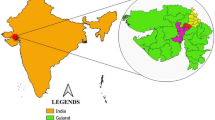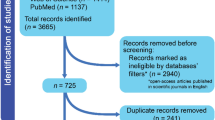Abstract
Conventional sample preparation methods for liquid chromatography–mass spectrometry (LC–MS/MS) are time consuming, laborious, expensive, and require large volumes of solvent for extraction and cleanup. We developed and validated a micro liquid–liquid extraction (MLLE) sample preparation method for LC–MS/MS analysis of thiacloprid insecticide residues in green onion. MLLE is a simple, rapid, and cost-effective method that uses less extraction solvent and does not require adsorbents or the cleanup step. The samples are homogenized with dichloromethane, centrifuged, the solvent evaporated to dryness and the residue is reconstituted with fivefold of acetonitrile; thus, the method is ecologically safer and low cost. The limit of quantification was 0.01 mg/kg. Method efficiency for MLLE was compared with the conventional QuEChERS sample preparation. MLLE exhibited good linearity (correlation coefficient, > 0.99). The average recovery ranged from 97.2 to 101.5%. Intra- and inter-day repeatabilities were 9.7 and 13.8%, respectively. Matrix effects were nonsignificant (suppression, 2.2%). The MLLE method was used to quantify the residual levels and rate of dissipation of thiacloprid in field trial green onion. The dissipation of thiacloprid fitted first-order kinetics, with half-lives of 1.92 and 2 days after application of the recommended dose (48 g a.i/ha) and double the recommended dose (96 g a.i/ha). Thiacloprid residues were below the limit of detection in green onion samples analyzed 14 days after spraying with either dose. Based on the maximum residue limit, a waiting period of 9 days is recommended. From Egyptian consumers’ point of view, the consumption of onion seems quite safe.



Similar content being viewed by others
References
Aktar W, Sengupta D, Chowdhury A (2009) Impact of pesticides use in agriculture: their benefits and hazards. Interdiscip Toxicol 2:1–12
Anastassiades M, Lehotay SJ, Štajnbaher D, Schenck FJ (2003) Fast and easy multiresidue method employing acetonitrile extraction/partitioning and “dispersive solid-phase extraction” for the determination of pesticide residues in produce. J AOAC Int 86:412–431
Banerjee K, Oulkar DP, Dasgupta S, Patil SB, Patil SH, Savant R, Adsule PG (2007) Validation and uncertainty analysis of a multi-residue method for pesticides in grapes using ethyl acetate extraction and liquid chromatography–tandem mass spectrometry. J Chromatogr A 1173:98–109
Bruzzoniti MC, Checchini L, De Carlo RM, Orlandini S, Rivoira L, Del Bubba M (2014) QuEChERS sample preparation for the determination of pesticides and other organic residues in environmental matrices: a critical review. Anal Bioanal Chem 406:4089–4116
Codex Alimentarius Commission. (2014) Guidelines for the simple evaluation of dietary exposure to food additives (CAC/GL 3–1989)
EFSA (2014) European Food Safety Authority, 2014. Reasoned Opinion on the review of the existing maximum residue levels (MRLs) for thiacloprid according to Article 12 of Regulation (EC) No 396/2005. EFSA Journal 12:3617–3728
Elbert A, Erdelen C, Kuhnhold J, Nauen R, Schmidt HW, Hattori Y (2000) Thiacloprid, a novel neonicotinoid insecticide for foliar application. In: The BCPC conference: pests and diseases, volume 1. Proceedings of an international conference held at the Brighton Hilton Metropole Hotel, Brighton, UK, 13–16 November 2000 (pp. 21–26). British Crop Protection Council.
EU-MRL-Database, http://ec.europa.eu/food/plant/pesticides/eu-pesticides-database/public/?event=pesticide.residue.CurrentMRL&language=EN. Accessed 19 Jan 2019
FAOSTAT (2017) Food and Agriculture Organization of the United Nations. Available at: http://www.fao.org/faostat/en/#data/QC. Accessed on Jan 19 2019
Ferrer C, Lozano A, Agüera A, Girón AJ, Fernández-Alba A (2011) Overcoming matrix effects using the dilution approach in multiresidue methods for fruits and vegetables. J Chromatogr A 1218:7634–7639
Hengel MJ (2011) Expanded method development for the determination of pesticides in dried hops by liquid chromatography with tandem mass spectrometry. J Am Soc Brew Chem 69:121–126
Lazić S, Šunjka D, Begović R, Vuković S (2015) Dissipation and persistence of thiacloprid in pepper fruits. Pesticidi i fitomedicina 30:225–232
Lehotay SJ (2006) Quick, easy, cheap, effective, rugged, and safe approach for determining pesticide residues. In: Pesticide protocols. Springer, Berlin, pp 239–261
Li S, Liu X, Dong F, Xu J, Xu H, Hu M, Zheng Y (2016) Chemometric-assisted QuEChERS extraction method for the residual analysis of thiacloprid, spirotetramat and spirotetramat’s four metabolites in pepper: application of their dissipation patterns. Food Chem 192:893–899
Li W, Ma Y, Li L, Qin DM, Wu YJ (2011) The dissipation rates of trichlorfon and its degradation product dichlorvos in cabbage and soil. Chemosphere 82:829–833
Liang H, Li L, Li W, Wu Y, Zhou Z, Liu F (2011) Dissipation and residue of dimethomorph in pepper and soil under field conditions. Ecotoxicol Environ Saf 74:1331–1335
Malhat F, Boulangé J, Abdelraheem E, Abdallah OI, El-Hamid RA, El-Salam SA (2017) Validation of QuEChERS based method for determination of fenitrothion residues in tomatoes by gas chromatography–flame photometric detector: decline pattern and risk assessment. Food Chem 229:814–819
Obana H, Okihashi M, Akutsu K, Kitagawa Y, Hori S (2003) Determination of neonicotinoid pesticide residues in vegetables and fruits with solid phase extraction and liquid chromatography mass spectrometry. J Agri Food Chem 51:2501–2505
Oerke E-C (2006) Crop losses to pests. J Agric Sci 144:31–43
Omirou M, Vryzas Z, Papadopoulou-Mourkidou E, Economou A (2009) Dissipation rates of iprodione and thiacloprid during tomato production in greenhouse. Food Chem 116:499–504
Paramasivam M, Kavitha J, Chandrasekaran S (2012) Persistence behaviour of thiacloprid residues in/on green tea leaves, processed tea and tea infusion. Bull Environ Contam Toxicol 89:602–605. https://doi.org/10.1007/s00128-012-0732-6
Saimandir J, Gopal M, Walia S (2009) Risk assessment of thiacloprid and its chemical decontamination on eggplant, Solanum melongena L. Pest Manag Sci 65:210–215. https://doi.org/10.1002/ps.1670
SANTE/11813/2017, Guidance document on analytical quality control and method validation procedures for pesticides residues analysis in food and feed. https://ec.europa.eu/food/sites/food/files/plant/docs/pesticides_mrl_guidelines_wrkdoc_2017-11813.pdf
Sharma B, Parihar N (2012) Dissipation and persistence of flubendiamide and thiacloprid in/on tomato and soil. Bull Environ Contam Toxicol 90:252–255. https://doi.org/10.1007/s00128-012-0911-5
Wang C, Guan W-b, Zhang H-y (2011) Dissipation and residue of thiacloprid in cabbage and soil. Bull Environ Contam Toxicol 87:440–443
WHO/GEMS/Food (2003) Global Environment Monitoring System/Food Contamination Monitoring and Assessment Programm Regional per Capita Consumption of Raw and Semi processed Agricultural Commodities. Geneva. http://www.who.int/foodsafety/chem/gems_regional_diet.pdf:WHO. Accessed on Jan19 2019
Xie W, Han C, Qian Y, Ding H, Chen X, Xi J (2011) Determination of neonicotinoid pesticides residues in agricultural samples by solid-phase extraction combined with liquid chromatography–tandem mass spectrometry. J Chromatogr A 1218:4426–4433
Ying G-G, Kookana RS (2004) Simultaneous determination of imidacloprid, thiacloprid, and thiamethoxam in soil and water by high-performance liquid chromatography with diode-array detection. J Environ Sci Health B 39:737–746
Yu Y-l, Wu J-l, Stahler M, Pestemer W (2007) Residual dynamics of thiacloprid in medical herbs marjoram, thyme, and camomile in soil. J Environ Sci 19:205–209
Author information
Authors and Affiliations
Contributions
Osama I. Abdallah and Farag M. Malhat contributed to the conception and design of the experiment, analysis of samples, and data analysis. Farag M. Malhat did the sample collection. Osama I. Abdallah wrote the manuscript.
Corresponding author
Ethics declarations
Conflict of interest
The authors declare that they have no conflict of interest.
Additional information
Publisher's Note
Springer Nature remains neutral with regard to jurisdictional claims in published maps and institutional affiliations.
Rights and permissions
About this article
Cite this article
Abdallah, O.I., Malhat, F.M. Thiacloprid Residues in Green Onion (Allium cepa) Using Micro Liquid–Liquid Extraction and Liquid Chromatography–Tandem Mass Spectrometry. Agric Res 9, 340–348 (2020). https://doi.org/10.1007/s40003-019-00440-8
Received:
Accepted:
Published:
Issue Date:
DOI: https://doi.org/10.1007/s40003-019-00440-8




